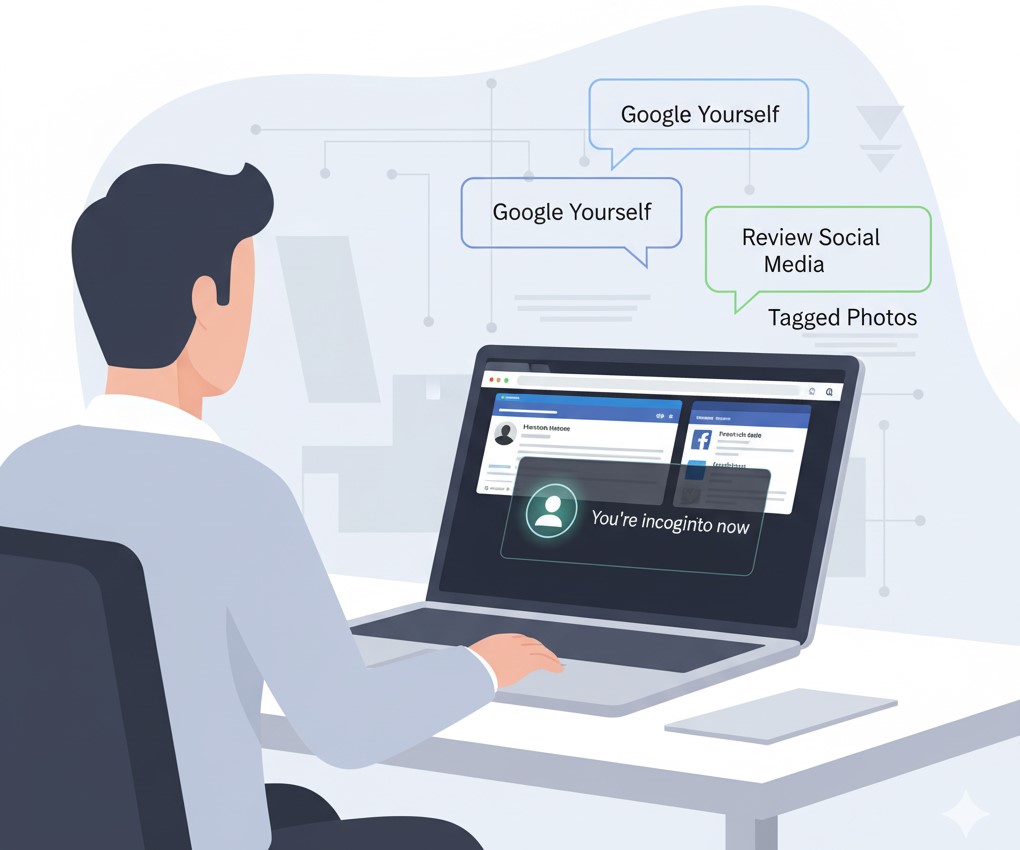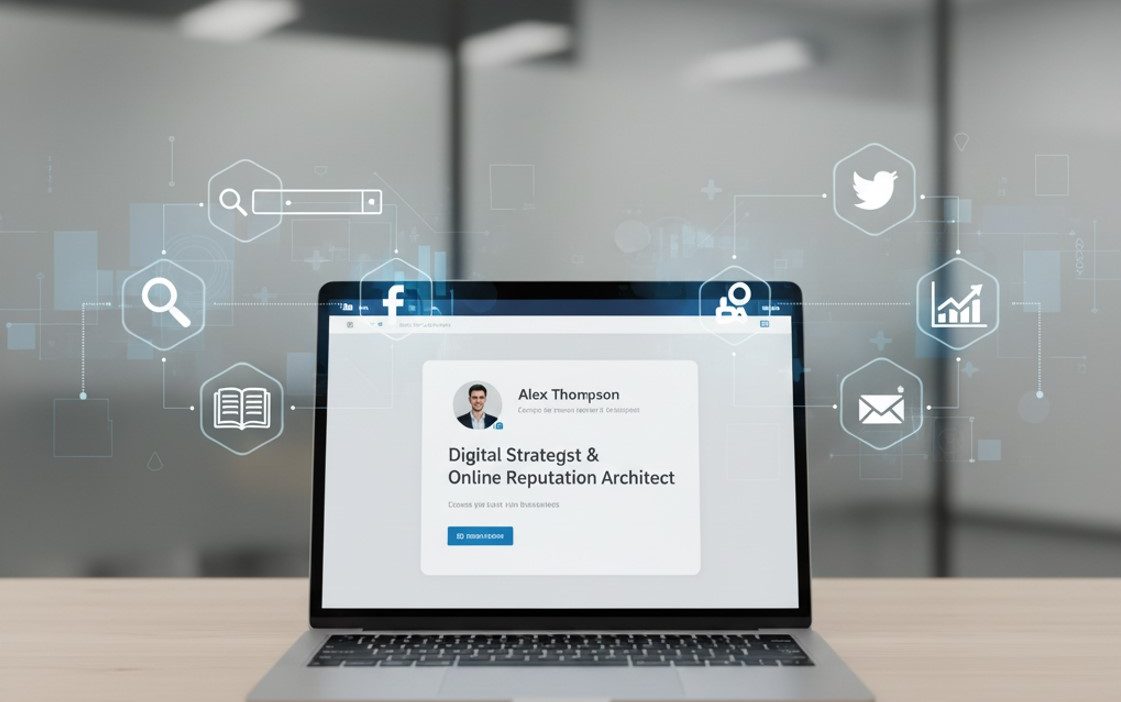Think about the last time you applied for a job. You likely spent hours polishing your resume, carefully selecting each word to present the best possible version of yourself. But what happens after you hit “send”? In many cases, the first thing a recruiter or hiring manager does is search for your name online. What they find—or don’t find—creates an immediate first impression that can be even more powerful than your meticulously crafted resume.
Your online reputation is the collection of information about you that exists on the internet. This includes your social media profiles, professional networking sites, personal blogs, photos you’re tagged in, and any public comments or forum posts you’ve made. It’s your digital footprint, and it tells a story about who you are, what you value, and how you present yourself to the world.
For professionals today, managing this digital footprint is no longer optional. A strong, positive online presence can open doors to new opportunities, build credibility in your field, and reinforce the qualifications on your resume. Conversely, a negative or non-existent online presence can raise red flags and cost you your dream job. This guide will walk you through why your online reputation matters so much and provide actionable steps for taking control of it today.
What Exactly Is an Online Reputation?
Your online reputation is the public perception of you based on your digital activity. It’s the sum of everything someone can find about you with a quick search. This includes a wide range of content:
- Search engine results: What appears on the first page when someone searches for your name?
- Social media profiles: Your posts, photos, and interactions on platforms like LinkedIn, X (formerly Twitter), Instagram, and Facebook.
- Professional websites: Your personal blog, portfolio, or company bio page.
- Third-party content: Articles, news stories, or blog posts where you are mentioned.
- Public records: Information that is publicly available online.
People form opinions quickly. When a recruiter searches for you, they are looking for signals that confirm you are a good fit for their company. A professional and polished online presence can validate your skills and experience. It shows that you are digitally savvy and care about your personal brand. If they find unprofessional photos, negative comments, or conflicting information, it can create doubt and undermine your credibility. In a competitive job market, that first digital impression can be the deciding factor.
How to Audit Your Digital Footprint

Before you can build a strong online presence, you need to know where you currently stand. Conducting a thorough audit of your digital footprint is the first crucial step. This process will help you identify what’s working in your favor and what might need to be addressed.
Step 1: Google Yourself
Start with the most obvious action: search for your name on Google. To get the most accurate results, use a private or incognito browser window. This prevents your past search history from influencing the results.
Try a few different search variations:
- Your full name (e.g., “Jane Doe”)
- Your name plus your city or industry (e.g., “Jane Doe marketing Chicago”)
- Your name in quotation marks to find exact matches (“Jane Doe”)
Review the first two or three pages of the search results. What do you see? Ideally, you want to see your LinkedIn profile, a personal website or portfolio, and positive mentions related to your professional life. Take note of any outdated information, unprofessional photos, or negative content that appears.
Step 2: Review Your Social Media Profiles
Next, go through all of your social media accounts. Look at your profiles from the perspective of a potential employer.
- Profile Picture and Bio: Are they professional and up-to-date? Your photo should be a clear, friendly headshot, and your bio should concisely describe who you are and what you do.
- Public Posts: Scrutinize your public posts, photos, and comments. Are there any controversial opinions, unprofessional images, or complaints about previous employers? Even if you think a post is harmless, consider how it might be interpreted by someone who doesn’t know you.
- Tagged Photos: Check the photos you’ve been tagged in by others. Platforms like Facebook and Instagram allow you to review and approve tags before they appear on your profile. Take advantage of this feature.
Step 3: Remove or Update Damaging Content
If you find content that could harm your professional image, take action immediately.
- Delete Old Posts: Go through your accounts and delete any posts, photos, or comments that are unprofessional or no longer align with your personal brand.
- Update Privacy Settings: Review the privacy settings on all your social media accounts. For personal platforms like Facebook and Instagram, consider making your profile private so only friends can see your content. Keep professional profiles like LinkedIn public.
- Request Removal: If you find negative content on a third-party website, you can sometimes request its removal. Contact the site administrator and politely explain why you would like the content taken down. While there’s no guarantee they will comply, it’s always worth asking. For more serious issues, you may need to explore reputation repair strategies.
Building a Strong Professional Online Presence
Once you have cleaned up your existing digital footprint, it’s time to start proactively building a positive online presence. The goal is to create a professional and consistent brand that showcases your expertise and value.
Optimize Your LinkedIn Profile
For professionals, LinkedIn is the most important platform for online reputation management. It’s often the first result that appears in a search for your name, so it needs to make a strong impression.
- Complete Every Section: A fully completed profile is more likely to appear in search results. Fill out your experience, education, skills, and accomplishments.
- Use a Professional Headshot: Your profile picture is your digital handshake. Choose a high-quality, professional headshot where you look approachable and confident.
- Write a Compelling Headline and Summary: Your headline should do more than just list your job title. Use it to highlight your expertise or value proposition. Your summary is your chance to tell your professional story.
- Get Recommendations: Ask colleagues, managers, and clients to write recommendations for you. These testimonials add significant credibility to your profile.
Create and Share Value-Driven Content

The best way to control your online narrative is to create your own content. This positions you as an expert in your field and pushes down any unwanted search results.
- Start a Blog or Portfolio: A personal website is a powerful tool for personal branding online. You can use it to showcase your work, share your insights through blog posts, and control the information people find about you.
- Share Content on LinkedIn: Regularly post articles, updates, and insights related to your industry on LinkedIn. Engage with others’ content by liking, commenting, and sharing. This activity increases your visibility and reinforces your expertise.
- Be Consistent: Develop a consistent personal brand across all your professional platforms. Use the same profile picture, a similar bio, and maintain a consistent tone of voice. This creates a cohesive and recognizable online identity.
Common Mistakes to Avoid
As you build your online presence, be mindful of common pitfalls that can undermine your efforts.
- Inactive or Incomplete Profiles: An outdated or empty profile can be just as damaging as a negative one. It suggests a lack of attention to detail or digital literacy.
- Unprofessional Posts: Never post anything online that you wouldn’t want a future employer to see. This includes complaints about work, controversial political statements, or inappropriate photos.
- Ignoring Privacy Settings: Failing to manage your privacy settings can lead to embarrassing content becoming public. Regularly review your settings to ensure you are only sharing what you intend to.
Tools to Help Manage Your Reputation
Managing your online reputation can feel like a full-time job, but several tools can help you stay on top of it.
- Google Alerts: Set up a Google Alert for your name. You’ll receive an email notification whenever new content mentioning you is indexed by Google. This is a simple but effective way to monitor your online presence for professionals.
- BrandYourself: This platform offers tools to help you improve your search results. It guides you through optimizing your profiles and creating content to build a positive online brand.
- Reputation Monitoring Tools: For those who need more advanced monitoring, services like Talkwalker or Mention can track mentions of your name across the web, including social media, news sites, and forums.
Protect Your Most Valuable Asset
Your online reputation is a living, breathing asset that requires ongoing attention. It’s not something you can set and forget. By taking control of your digital footprint, you are investing in your future career success. A strong online presence can open doors, build your credibility, and give you a competitive edge. It’s your new resume, and it’s time to make sure it’s telling the right story.
Start today. Audit your online presence, clean up any damaging content, and begin building a professional brand that you can be proud of. The effort you put in now will pay dividends for years to come.
Frequently Asked Questions
How do I check my online reputation?
The easiest way to check your online reputation is to search for your name on Google using a private or incognito browser. Review the first few pages of results to see what information is publicly available about you. You should also review your social media profiles from the perspective of a potential employer.
Can I remove negative search results from Google?
Removing negative search results can be challenging, but it’s not impossible. If the content is on a site you control, you can simply delete it. If it’s on a third-party site, you can contact the website administrator to request its removal. For certain types of personal information or content that violates Google’s policies, you can submit a removal request directly to Google. Another effective strategy is to create and promote positive content, which can push the negative results further down in the search rankings.
Why is LinkedIn so important for my online reputation?
LinkedIn is crucial for online reputation management because it’s a professional platform that often ranks at the top of Google search results for a person’s name. A well-optimized LinkedIn profile serves as a digital resume, showcasing your skills, experience, and professional network. It allows you to control the narrative and present a polished, credible image to recruiters, clients, and colleagues.
Learn more about: Online Reputation Tips for Real Estate Agents in Competitive Markets





